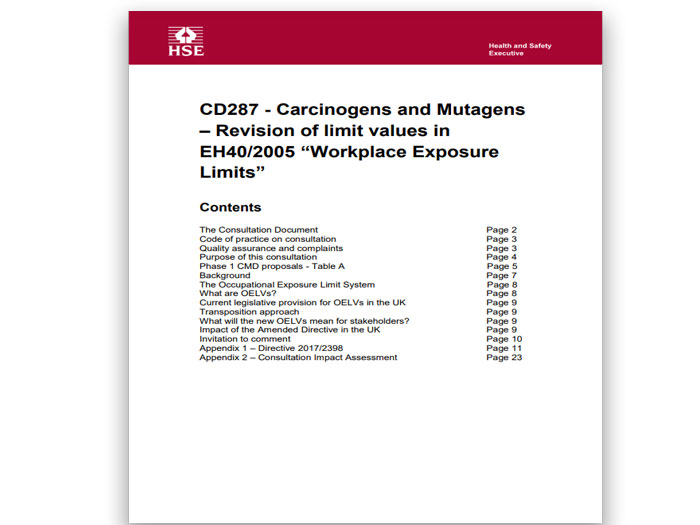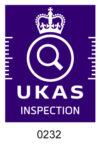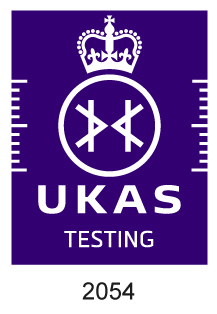Menu
close
**LATEST** New quantitative face fit services for RPE
Book in today
In our latest video, AEC’s Technical Director, Darren Evans and Senior Occupational Hygienist, David Russon give an in-depth overview on the recent HSE consultation on the ‘implementation of Carcinogens and Mutagens Directive’. In particular, they provide advice on four significant substances: respirable crystalline silica (RCS), chromium VI, refractory ceramic fibres (RCF) and hardwood dusts.
What is the HSE consultation and EU directive?
OELVs (known as WELs in the UK) are set to help protect workers from the ill-health effects of exposure to hazardous substances. In January 2018, the EU Directive ‘the implementation of Carcinogens and Mutagens Directive’ came into force and states new OELV limits are to be introduced i.e. reduced by January 2020 in all member states, with further incrementally targeted reductions in WELs for Cr (VI) and hardwood dust in several years’ time.
In a bid to help protect workers from the effects of exposure to carcinogens and mutagens in the workplace, the HSE have circulated a consultation document which focuses on the new OELV limits and have said these will be implemented in the UK (whether Brexit happens or not), because the impact is not considered significant because:
Revision of exposure limits
The Carcinogens and Mutagens Directive amends 11 new and binding OELVs and amends 2 existing OELVs for carcinogenic substances. The Directive also classifies Respirable Crystalline Silica (RCS) as a carcinogen where it is generated as a result of a work process, such as cutting blocks or stone on construction sites.
A full list of the substances can be viewed on page 4 https://consultations.hse.gov.uk/hse/carcinogens-mutagens-revision-of-limit-values/
By 2020, it is likely that the new OELVs limits will be expected to be reduced in all workplaces in the UK. The table below shows examples of the four significant substances that will be affected.

Employers – Prepare for the changes now!
If you are an employer, who use or generate any of the hazardous substances on the directive list, you need to consider reviewing your existing risk assessment as well as controls and internal practices in order to continue to be compliant under the COSHH Regulations 2002.
Does your current risk assessment meet the HSE’s expectations, and are you taking the correct steps to protect your workers health?
Does previous exposure monitoring indicate control of exposures to below the new WEL?
It is your legal duty to control workplace exposures to as low as reasonably practicable, and always below the WEL. In order to meet the new revised WELs limits, employers should:
1. Review COSHH assessments – is it still valid?
2. Review control measures – are your controls adequate and do you have written evidence?
3. Carry out exposure monitoring to prove that your controls are providing protection.
4. Review your information and training – do your employees have the correct information and training and understand why control measures are so important to protect worker health?
AEC can help
Our team of occupational hygienists can assist with:
For advice call our team Manchester 0161 872 7111, London 0203 384 6175
The full HSE consultation document can be viewed here https://consultations.hse.gov.uk/hse/carcinogens-mutagens-revision-of-limit-values/
Exposure to harmful substances, elevated noise levels and prolonged use of vibration tools can cause serious ill-health over the longer term. If appropriate controls are not being used then employees will be at risk of serious illness such as cancer, asthma, skin diseases , hand-arm-vibration syndrome and deafness.
Occupational Hygiene is concerned with ‘worker health protection’. It is often described as the recognition, evaluation and control of exposure to workplace hazards. These include agents such as may include chemicals, dust, fumes, noise, radiation, vibration and extreme temperatures. chemical, physical and biological agents arising from workplace activity. The presence of these agents may affect the health and well-being of employees.
The Duty Holder is required by law to protect its employees and others from harm. The minimum you must do is:
1.Identify what could cause injury or illness (hazards)
2.Decide how likely it is that someone could be harmed and how seriously ( the risk)
3.Take action to eliminate the hazard, or if this isn’t possible, control the risk.
This chart highlights the possible health effects associated with different types of contaminants found in the workplace.
The law requires employers to adequately control exposure to substances in the workplace that cause ill health. This is the Control of Substances Hazardous to Health Regulations 2002 (COSHH). In addition, organisations need to work within the legal limits for the amount of substances that can be present in the workplace air. There are also regulations for the control of: Noise , Vibration and Local Exhaust Ventilation. You can view a range of HSE guidance relating to Occupational Hygiene at https://www.hse.gov.uk/pubns/books/index-legal-ref.htm
BOHS is a membership organisation that promotes Occupational Hygiene as the science-based discipline for identifying, assessing and controlling exposure to harmful substances in the workplace. It is the only Occupational Hygiene organisation to be awarded a Royal Charter in recognition of its ‘ unique and pre-eminent role as the leading authority in occupational disease prevention’. BOHS is also a UK based examining board for occupational hygiene qualifications

